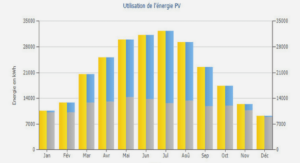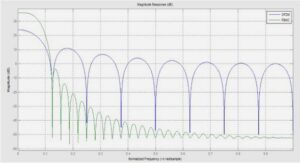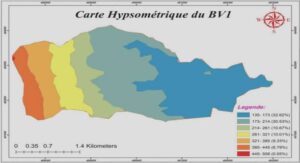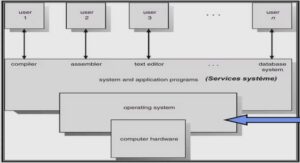Cours optical water quality variables, tutoriel & guide de travaux pratiques en pdf.
Water remote sensing
Water remote sensing refers to water observation from distance in order to describe its color or temperature. This is succeeded with the use of earth observations sensors or satellites. Objects’ information is acquired via reflected electromagnetic signals. However, light and color, to which we focus here, are complex features, influenced by absorption, scattering, and emission. The light reaching water surface consists of direct sun light and diffused light after interaction with the atmosphere. At the surface of the water this light is either reflected or refracted. In the water column, the water itself and the different constituents of the water column will interact and transform the light by transmission, absorption, and scatter. Proportion of scattered light upwards, is captured and observed by satellite sensors. Figure 4 gives a schematic illustration of various light interactions involving air, water and substrate.
Figure 4: Illustration of light interactions before it is captured by satellite sensors (Dekker, 1993).
As explained in 2.1, in the visible range of light, chlorophyll, suspended particulate matter and other optical quality parameters, interact and modify the shape and amount reflected signal (Dekker, 1993). On the other hand, the received signal from satellites is strongly dependent on the type of satellites, spectral response and band placement. In Figure 5 we can see an indicative schematic illustration of satellites Landsat and MODIS spectral extent, resolution and density. We can see along in the figure the reflectance of different kinds of observed objects (water, soil, vegetation). As explained, for water observation we stay in the visible range of wavelengths. We realize then, that different technical characteristics, resolution, band number and placement between satellites play a key role on the received information.
Figure 5: Indicative illustration of spectral extent, resolution and density for Landsat and MODIS satellites superposed to reflectance of different observed objects (Dekker, 1993).
In order to translate measured spectral reflectance received from water bodies, into concentrations of water quality variables, there has been developed a series of satellite images algorithms (Laanen, 2007). These algorithms consist of multispectral transformations of satellite data, whose aim is to convert measured radiances to thematic variables. The idea is to decrease the quantity of available data by keeping only the useful proportion, according to what we need to observe. These tools use radiances or reflectance of different channels, which are represented by the different bands of multispectral satellite data. With reference to the different observed objects’ reflectance proprieties, the different algorithms look for the best combination of bands that will give the best possible and most accurate translation of information. With respects to water observation, as discussed in 2.1, the bands of the visible range of the spectrum (~400-700 nm) interests us the most, with respects to light interaction with the constituent optical active components. However, a large number of multispectral transformation are based on the bands corresponding to red (600-700 nm) and near infrared (NIR) (700 nm-1mm) spectrum (Figure 6), since it’s between those two bands that we can observe the biggest reflectance differences between vegetation and ground or water.
Figure 6: The electromagnetic spectrum (Lillesand & Kiefer, 1987).
In Figure 7 we can see an indication of reflectance spectra of chlorophyll and water, amongst other features. The reflectance of clear water is generally low. Nonetheless, the reflectance is maximum at the end of blue and decreases as the wavelengths increase. Water constituents mostly interact with light in the visible range and water completely absorbs light for wavelength longer than 900 nm. Turbid water, with dissolved non algal particles interacts with light increasing the reflectance, which is higher outside the blue region that mostly absorb. Reflectance of bare soil depends on its composition. Vegetation, whose main constituent is Chl-a, has a unique spectral signature. Reflectance is low on both red and blue regions (as chlorophylls have two absorption peaks between 400-500 nm, the blue region, and 600-700 nm, the red region as seen in Figure 2 before) and high at the green region (500-600 nm). Reflectance of vegetation in the NIR is much higher than in the visible due to its cellular structure, which do not use wavelengths longer than 700 nm (Chin, 2001). Generally, reflectance differences between the Visible and NIR can distinguish different vegetation types. Finally, overlapping absorptions of dissolved non algal particles of the water and Chl-a in the blue region, renders the blue to green bands inaccurate for evaluation of Chl-a. Hence, relevant assumptions are based mainly on the red and NIR channels.
Figure 7: Reflectance spectra of various types of land cover (Chin, 2001)
In the current study we included two main satellite algorithms, the Normalized Difference Vegetation Index (NDVI), the Normalized Difference Water Index (NDWI) and some specific chlorophyll indexes based on literature. Besides these wildly used indexes, there is the possibility to reveal required information from the arithmetic combination (division or other) of different canals in the form of band ratios. Moreover, there is the possibility to use band combinations in order to create RGB color composites, which are specifically tailored to facilitate the identification of features of interest. Using these, we will tend to analyze data received from satellites Sentinel-2A and Landsat, whose technical characteristics and details are given hereafter.
Sentinel-2 satellite missions
The European Space Agency is developing a new series of seven satellite missions under the Sentinel program. The Sentinel missions consist of next-generation earth observation missions with radar and multi-spectral imaging instruments, each focusing on a different aspect, atmospheric, oceanic or land monitoring. Each mission is based on the implementation of two sets of satellites in order to fulfill best revisit and coverage requirements, providing this way robust datasets for use in many applications.
Sentinel-2 is a multispectral high-resolution imaging mission whose objective is land monitoring, including vegetation, soil and coastal areas. It will be composed of two polar-orbiting satellites, with the first Sentinel-2A having been already launched in June 2015 and Sentinel-2B following, in the second half of 2016 (ESA, European Space Agency , 2016). The twin satellites will be flying in the same orbit phased at 180º to each other, designed to give high revisit frequencies. The mean orbital altitude of the satellites is 786 km and they will acquire data over land and coastal areas including islands, the Mediterranean Sea, inland water bodies and closed seas (Figure 8).
Figure 8: Modelled Sentinel 2 coverage at full operation (ESA, European Space Agency , 2016)
The Multispectral Instrument they use works passively collecting sunlight reflected from earth. Thereafter, the incoming light beam is separated in two different assemblies one for the visible and for the NIR bands and another one for the Short Wave Infra-Red (SWIR) bands.
High spatial and spectral resolutions of Sentinel satellites are of great interest, as their combination is the most important advantage they have over heritage satellites. To be more precise, Sentinel-2A, already in orbit, using as described a MSI sensor, measures earth reflected radiance in 13 spectral bands, spanning from the visible and NIR to SWIR. The spatial resolution of bands, meaning the detail in a photographic image visible to the human eye, varies from 10 to 60 m as follows (Gatti & Bertolini, 2015):
• 4 bands at 10 m: blue (490 nm), green (560 nm), red (665 nm) and NIR (842 nm)
• 6 bands at 20 m: 4 narrow bands for vegetation characterization (705nm, 740nm, 783 nm and 865 nm
• 2 larger SWIR bands (1610 nm and 2190 nm), for snow, ice, cloud detection or vegetation moisture stress assessment
• 3 bands at 60m for cloud screening and atmospheric corrections (443 nm for aerosols, 945 for water vapor and 1375 nm for cirrus detection)
Table 1 provides a detailed description of spectral resolutions (bandwidth) and their ability to resolve features in the electromagnetic spectrum.





